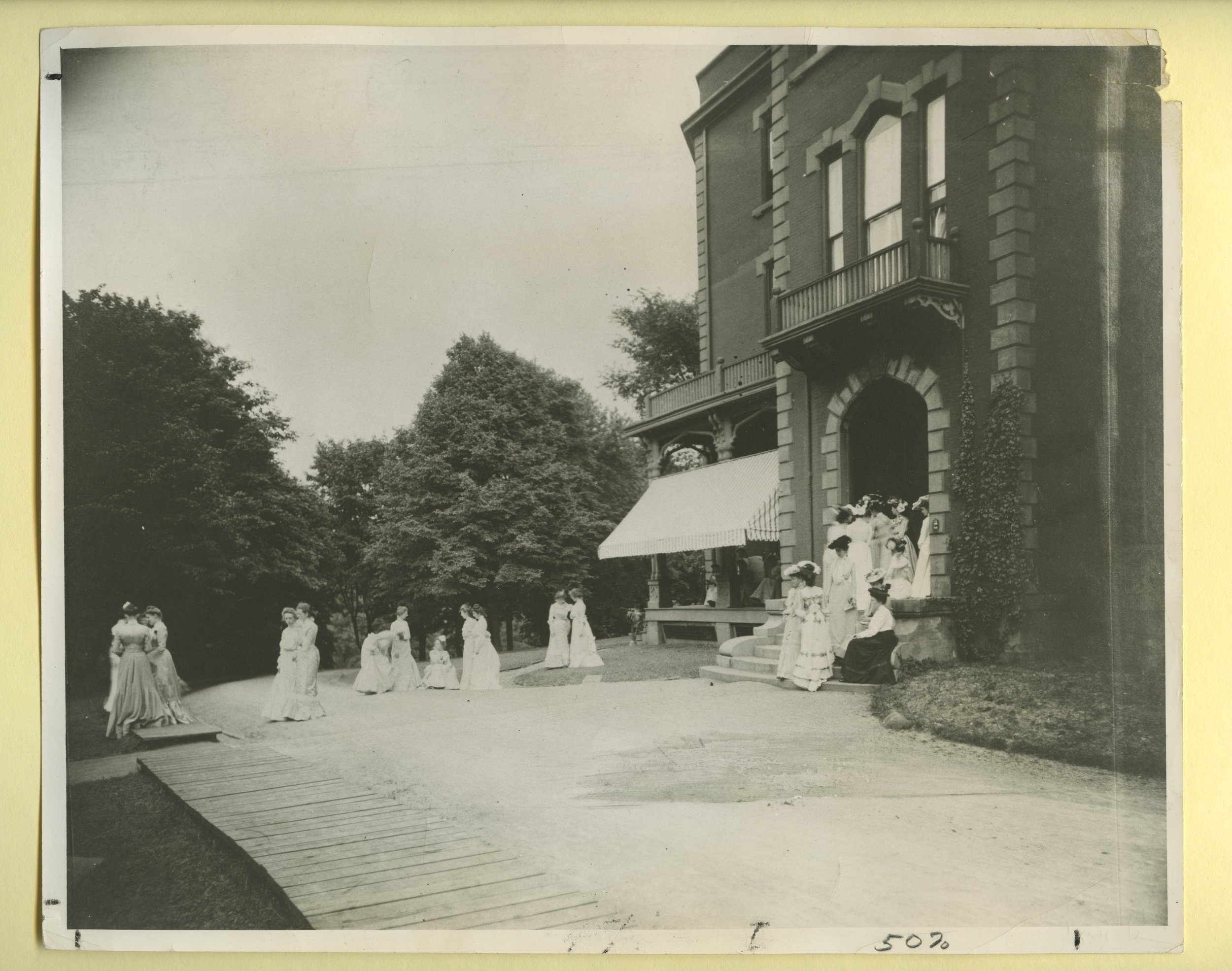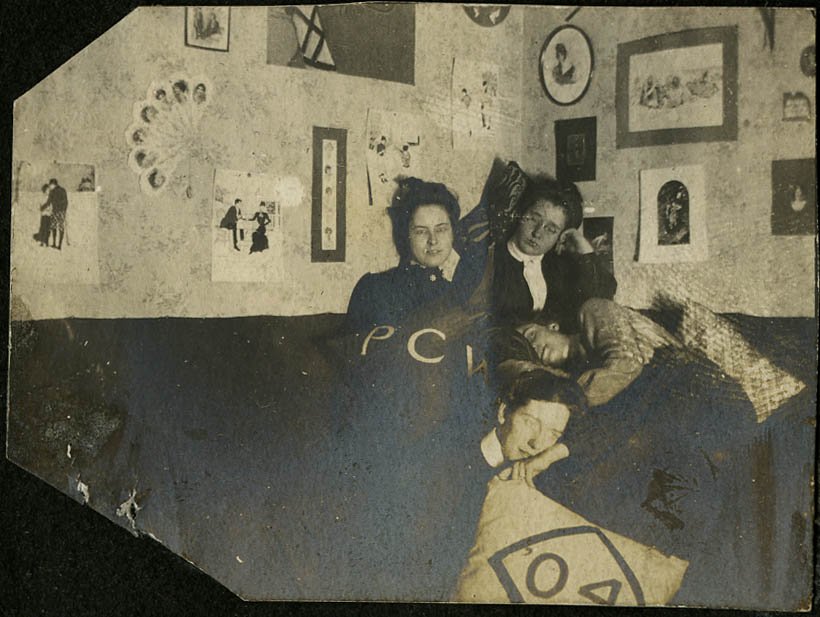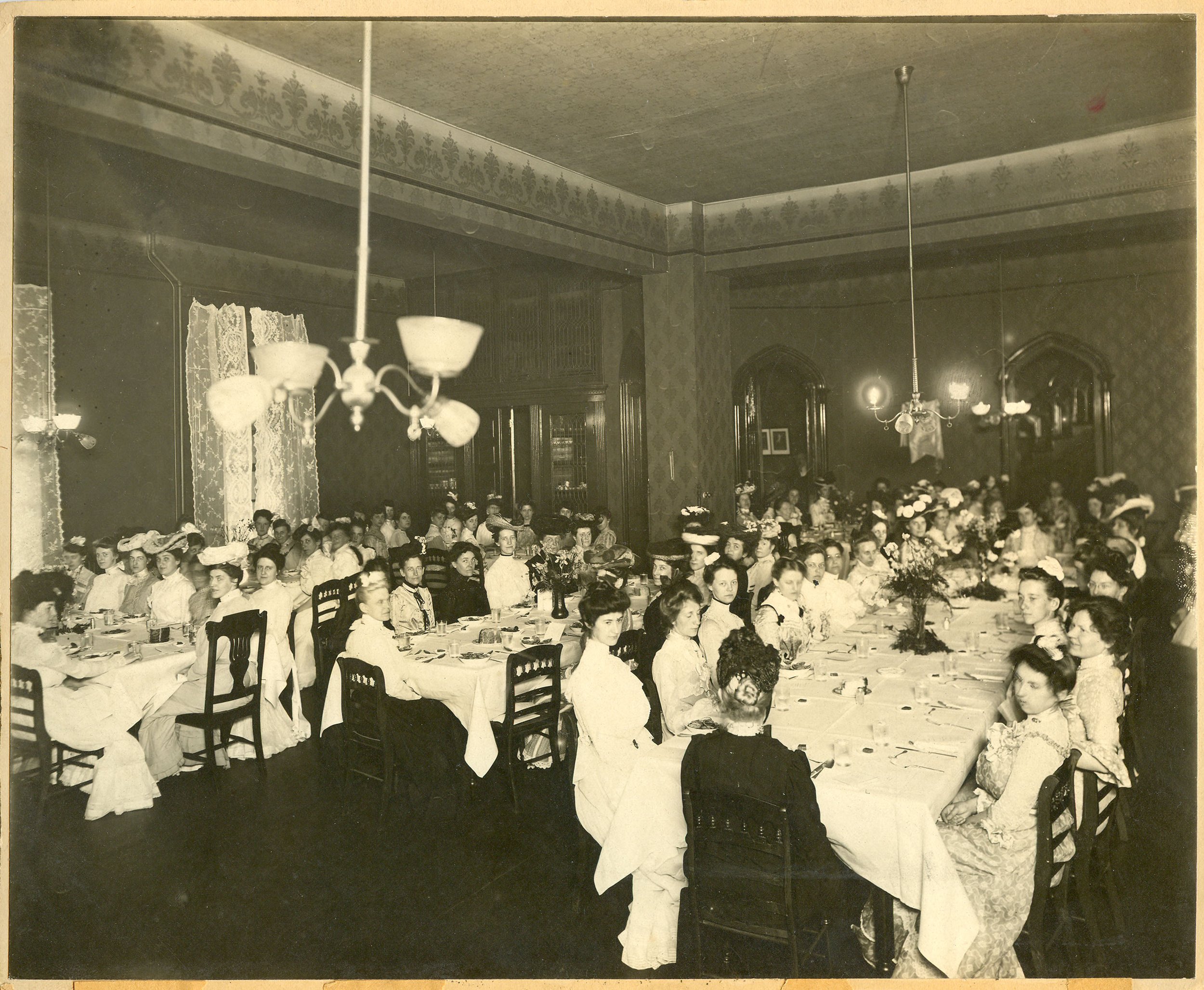Campus Building Profile: Berry Hall I
An illustration of the exterior of Berry Hall I. (Chatham University Archives and Special Collections)
This is the first in a series exploring and celebrating the history of the iconic buildings on Chatham’s campus, beginning with the first building acquired by the then-college: the original Berry Hall.
A 1922 article from the Chatham University student newspaper, The Arrow, ponders, “Have you never wondered about Berry Hall ... as the Berrys knew it?”
This is not the Berry Hall that current students know—the red brick building that houses the Office of Student Admissions—but its namesake, the first building to ever become part of Chatham’s campus in 1870 when it was the Pennsylvania Female College.
Archivist Molly Tighe said the history of campus buildings is an evergreen topic, hence why there are student newspaper articles on the topic dating back over 100 years.
Photos of Berry Hall I from the Chatham University Archives and Special Collections
The first Berry Hall was a mansion belonging to George A. Berry, one of the first members of Chatham’s board of trustees and the president of Pittsburgh Clearing House and Citizens Bank in the mid 1800s, according to a 1981 article in “Matrix,” a Chatham student newspaper.
It was part of a ten-and-one-half acre property on Murray Hill above Fifth Avenue, where Braun and Falk halls now sit. Although the college expanded upon it to accommodate a growing student population, it was originally a three-story red brick house built with an American Gothic influence.
According to some sources in Laberta Dysart’s “Chatham College: The First Ninety Years,” it was said to be the largest private residence in Allegheny County at the time. Photos of the mansion make that claim easy to believe.
(Chatham University Archives and Special Collections)
On the first floor, it had large classrooms. Floors two and three were used for student housing, with part of the third floor hosting a gymnasium until 1871, when an addition was built for a larger gym and music rooms. Eventually, the gymnasium and music rooms were moved to separate buildings when a fourth floor was built for Berry Hall to accommodate the growing student population.
Before Mellon Hall became part of the college in 1940, Berry Hall I was the heart of college life; it was the place to host dances and guest speakers. A 1922 article in “The Arrow” student newspaper mentions a wedding happening there.
“It was used for basically all campus activities,” Tighe said.
The interior was just as lavish as the exterior, with different rooms boasting features like built-in bookshelves, tile floors, wallpaper, high ceilings, and arched doorways—features that would feel familiar to what students see today in residence halls like Rhea, Fickes, and Laughlin.
In 1952, Berry was demolished after it and other buildings on campus were regarded as fire hazards. A board of trustees meeting determined Berry was “not only obsolete in design, but inadequate in size, costly to maintain, and beyond repair.”
“I think folks were very excited about building the new campus buildings that stand where Berry Hall stood,” Tighe said. “And they do serve wonderful functions. The flexibility of Braun, Faulk, Coolidge and their use for classes and offices seems to be very useful.”
Tighe said it was likely that, if the same sensibilities for historic preservation that exist today had been around in the early 1950s, the building wouldn’t have been completely razed. But, in 1953, the final part of Berry still standing was destroyed to make way for new buildings to accommodate the college’s growing size and its need for more modern infrastructure.
Though it has been destroyed for decades, there are still small pieces of Berry Hall I that remain on Chatham’s campus. Tighe noted that a distinct wood panel in the Founders Room in the James Laughlin Music Hall was taken from one of Berry Hall’s doors. It’s a small reminder of the big mansion that was the foundation of Chatham’s long history.
Want to see our historic campus for yourself? Schedule a tour with our Admissions team, explore by yourself with our self-guided QR code tour, or take a virtual tour on your personal device wherever you are!
Mick Stinelli is a Writer and Digital Content Specialist at Chatham University. His writing has previously appeared in the Pittsburgh Post-Gazette and 90.5 WESA, and he has a B.A. in Broadcast Production and Media Management from Point Park University. Mick, a native of western Pennsylvania, spends his free time watching movies and playing music.










